Ralph Paine – 2 September, 2016
Here I submit this schema to the case at hand, the nameless artist - to extend and test my ground, and equally to extend and test the case. Transfixed by its virtual being, the artist accedes to the problematic of ground as such. It is for her both the zero-degree of art and the neutral, passionless dimension of life. Accordingly, her art-life may be said in the sense of an adherence to this problematic, to the realization or singular attainment of its a-temporal and impersonal surface, a reaching of that non-zone where everything is “eternally yet to come and always already past”.
SCHEMA
To ground then… But what ground? What is a contemporary sense of ground; what is ground now? Or, in an age of cataclysmic state-capitalism, global civil war, nihilism, and the scientific “truth” of extinction, is ground today simply an unalloyed non-sense and thus a tragic sense of groundlessness the only option? Alternatively, perhaps the only option is to make a sense of ground, one which would nevertheless include the reality of its own non-sense and groundlessness. Proceeding with the later task, and all the while gaining inspiration from the sublime onto-poetics of Gilles Deleuze’s The Logic of Sense, I begin by assembling a conceptual schema of ground comprising n dimensions, each dimension implicit in ground, and in each other, and with the logical requirement of there being an extra dimension, namely - and paradoxically - ground’s non-dimension, its surface and neutral aspect. (1)
Ground’s neutral surface, however, is not what unifies ground - because that would make it a one - and nor is it the dimension of the negative, not a negation of ground. Rather, it is the dimension of the problematic, the elemental asking of the question “What is ground?”, and which Deleuze would have me write as ?-Ground. ?-Ground is virtual, void, a non-sense, and therefore fully disposed to all other potential dimensions or senses of ground whatsoever: “independent of both the negative and the affirmative”, it is the condition of ground’s n dimensions, a purely effectual realm (2) engendering these dimensions as the expressed, answered, or transformed condition of itself… Yet, because it is neutral to them, without the n conceptual dimensions in any way resembling the problematic or paradoxical condition as such. (3) Each dimension qua attribute, however, does possess its own “depth” or “power” as organizing principle, and in this manner each presupposes and in a reciprocal or co-forming manner helps condition the neutral - “neither active nor passive” - surface to which it adheres. (4) Hence, the surface is the enigmatic anywhere where each of the n dimensions happen - manifesting, distributing, and “reshuffling” themselves as impassioned solutions to the empty, Zen-like problem of ground.
Here I submit this schema to the case at hand, the nameless artist - to extend and test my ground, and equally to extend and test the case. Transfixed by its virtual being, the artist accedes to the problematic of ground as such. It is for her both the zero-degree of art and the neutral, passionless dimension of life. Accordingly, her art-life may be said in the sense of an adherence to this problematic, to the realization or singular attainment of its a-temporal and impersonal surface, a reaching of that non-zone where everything is “eternally yet to come and always already past”. (5) To be connected to this non-zone is to subsist in pure awareness, to contemplate the {w}hole of ground, to hallucinate ground’s empty dimension. But the artist’s adherence to ?-Ground is in the meantime a process tending toward spatio-temporal solutions, that is to say, toward the generation of actual dimensions of ground. While remaining/aiming at the empty surface, this is when her art-life wills the manifestation of ground in her body and through what it conceives and produces. I pass now to my examples.
THE COMMON
The nameless artist’s participation in a mix of free-action, self-organising groups, and associationist practices points to the generation of a politico-economic dimension of ground. Because in effect experiments in living labour, these modes of activity tend to establish the art-life as a brother- and sisterhood; or better, a being-with or being-for the other whereby the simple act of getting together has already constituted a social platform for added multiple acts - in principle a platform extending well beyond the art-life to include and help assemble a hybridized and networked collective of bodies and intellect, tools and machines, linguistic acts and services: in brief, a production-in-general. Antonio Negri names this “the common”, defining it as “the terrain where the results of the production of independent subjectivities and the cooperation of subjectivities is accumulated and consolidated”, adding that “the common is an activity […] it is an assemblage (agencement) or an open continuity, not a densification of control”. (6) The artist’s free-action, her self-organising groups and associationist practices are, then, real and prospective zones of the common; they are positive events wherein “that which is realized has a surplus with respect to that which is possible”. A surplus, that is, of living labour. (7)
Meanwhile, the dimension of ground thus constituted remains also a potential zone for being-in-rivalry with the other. There is a remarkable competitiveness and hierarchy in the history of art production (as there is, of course, in the history of production-in-general), an antagonism and exploitative aggressiveness acting as a negative condition for any art-life. Even ancient myth speaks to us of this… In Metamorphoses Ovid tells the story of the goddess Minerva’s jealousy for the astonishing weaving skills of a young woman named Arachne, a jealousy which leads Minerva to challenge the young woman to a competition. (8) When indeed Arachne does weave what is judged to be the better tapestry, this sends the goddess into a rage and she destroys Arachne’s work and beats her viciously about the head with a weaving shuttle. Dishonoured and badly injured, Arachne now fastens a noose around her own neck and attempts to hang herself. But upon this Minerva takes sudden pity, deciding to let Arachne live, and so leaving her suspended in mid-air like that for all time she transforms Arachne into the first spider.
Extreme forms of pride, envy, virtuosity, humiliation, destructiveness, and pity combine in Ovid’s story to create, not a moral tale, but rather a retelling/relaying of the conditions necessary for the emergence of a new form of life, a new species. And so it is today that when the independent subjectivities operative of the production of art find themselves captured by an historical logic arising from the negative conditions of the state-capitalist régime of that production, the ensuing politico-economic suffering and precariousness endured ought be conceived as vital components in that play of contradictions and tensions requisite for the cooperative invention - and continual reinvention - of a different régime, namely, the common. (9) This is not to say that rivalry will disappear. Rather, non-state-capitalist, non-exploitive rivalries are likely to emerge, rivalries isomorphic to the ongoing organization of the common.
As my use of the joint term “politico-economic” here suggests, the cooperative invention of the common is an activity held together by two major poles of concern. At one pole there is a desire for anarchist-based strategies designed to resist domination, to counter detrimental and inequitable political relations. And at the other pole, a desire for socialist-based strategies designed to resist exploitation, to counter untenable and unfair economic relations. In his recent study of Marx’s Capital, however, Fredric Jameson writes that he considers political domination to be not only a secondary result of economic exploitation, but also the very “mode of its reproduction”, and hence his primary desire for a “recoding” of the “misery and enforced idleness” of unemployment - that is to say, “of naked life in all the metaphysical senses in which sheer biological temporality of existences without activity and without production can be interpreted” - into a recommitment “to the invention of a new kind of transformatory politics on a global scale”. (10)
Implicit in this invention, I believe, lies a twofold imperative for the recoding of art-work as such: a call, first, for newly proliferating and widening/deepening forms of institutional critique and negative accounts of contemporary state-capitalism; and second, for added experiments in the constitution of living labour, in being-with and being-for the other, and in how the performative and organizational nature of these activities might interrelate in a co-productive manner with the material fabrication of the common, that is to say, with the composition of its urban design, architecture, art, literature, drama, music, dance, fashion, cuisine, etc. In other words, and although I have been speaking of it all along, this now points to the generation of an aesthetico-cultural dimension of ground. In this regard, let’s observe that within art’s critical and associationist milieus many of the artworks produced today allude to the invention of a different kind of economy. This we name an economy of intimate expenditure, one where fertile flows of excess, avid recycling, readymades, potlatch-type events, digital trading mats, mutual aid and nomad hospitality, carnivalesque community markets, and labour as non-work operate as value creating models rather than any new hyper-real gold standard, increased forms of austerity and efficiency, continued idealisation of work, or further cycles for the private accumulation of capital. (11)
WE STILL DO NOT KNOW WHAT ART IS CAPABLE OF
At this juncture it is worth noting that once upon a time in modernity all production gained what Nietzsche called “the will to power as art”. Famously, with this he designated art as a kind of force, but it was a force now unchained from the religious and aristocratic elites for whom both art and power had once been given rights. In other words, both the will and the power now belonged to art as such, as a common force. Nietzsche’s concept “the will to power as art” thus marked the birth of a new kind of aesthetic subjectivity, a subjectivity formed of and for the an-archic and autonomous freedom of art. Yet today the expression “the will to power as art” tragically reminds us that the modern was to be an epoch of newly formed elites and grand projects; and conceivably, that art was the grandest of these projects. Indeed, one may go so far as to say that modernity’s very condition of being was premised on a radical trans-valuation of all prior perceptual and sensual modes of human expression and culture.
Yet whatever the case, it is certain that an extremely productive will to power as art traversed the full range of modernist projects, from those of burgeoning capitalist modes of production/consumption to the ongoing constitution of “imagined communities” or peoples as defined and produced within multiple social movements (left and right), and including projects for the construction of modern nation-states. But Nietzsche’s concept might also remind us that art - flush as it is with the real of ground’s neutral surface - always already expresses something virtual, that is to say, art is a will or force whose power remains eternally open to the errant potentiality of the to-come. It is in this Nietzschean-inspired sense that we may keep on claiming - and acting on behalf of the claim - that we still do not know what art is capable of. (12)
From experimental theatre and performance to installationism, from film and sound work to writing and grass-roots publishing, and including video, collage, intervention and participation, drawing, painting, casting, carving, tattooing, photography, tagging, music production, curating, weaving, tapestry, pedagogy and therapeutics, activism, printmaking, ceramics, web production, etc. etc. each mode of art is a relay in what has become an expanded field, a complex and rather luxuriant holding pattern of contemporary practice. Whence the ever repeated question: “How to assist in remaking the aesthetico-cultural dimension of ground now?” A question adopted like a mantra and a way of widening the scope to allow successive overviews or surveys of the dimension’s fractal lines and trans-active contours. But patched in among the overviews there are multiple tracking shots, transversal paths of practice focusing on some rupture or unconscious fissure within the dimension, or on some aspect of its non-human agency, its sub-zones and barely perceived nooks and crannies, or its overflow, backwash, echo, or even mistranslation into and across other dimensions. What results, then, is a map which is more than the territory, both pragmatically and thematically, and thus the nameless artist’s subject becomes the excessive nature of the production of art and its implicit ground.
Here I intend the word “subject” in its varied, fluid sense. First, as topic or theme; and second, as self, agent, person - but with the second group of meanings being said not only in the sense of expressing a set of animal powers linked to a sovereign inner-outer experience or point of view, but also in the sense that the self, agent, person is an expression of - the embodiment of, bearer of - certain social powers. Whence the notion that the artist is subjected, trained, produced; that she is a subject of these social powers and thus subsists within them as within interconnecting régimes - politico-economic régimes, aesthetico-cultural régimes, etc. By taking on the excessive nature of the production of art as thematic, automatically the artist takes it on as both natural/animal milieu and the mutating locus of her subjection. Now, to take something on is to adopt it/adapt to it, but simultaneously to oppose it. Accordingly, the artist’s venture will function via a two-fold articulation of self and ground, that is to say, via chameleon-like processes of survival and adjustment which nevertheless double as a means of seeking, specifically within the excess, ways of resisting the givens of ground’s various régimes and milieus (and this will include ways of resisting their very ways of being excessive!) thereby creating methods of moving-away, techniques of travel and wandering - from servile realisations to increasingly autonomous ones.
This, then, will be a moving-away conducted while staying-within. A moving-away from first natures in order to create second natures, new subjects or series of subjects, third, fourth, nth, and with the effect being a continuous mutation of subjectivity, an experiment of “escape”, but importantly, one conducted as if already immersed within a new régime. (13) In this sense, the nameless artist’s works will aspire to the condition of non-work and non-identity; they will not be reliant on a set of already established codes, rules, measures, protocols, habits, but rather - in a swerve from these - will have been intuited and constructed each time as defiantly unique things and procedures: ritualistic encampments, imagistic tales of the impure, witch’s flights, shamanic performances, hyper-strange objects, dreamscapes in the order of heresy, Whatever diagrams… And as such, always intended to seed and nourish a coming consciousness of there being something astonishing and radically different already at hand... This transformational quality of the artist is named “fabulation”.
Developed by Henri Bergson in The Two Sources of Morality and Religion (1935) and subsequently gleaned and further developed in the later writing of both Deleuze and Deleuze & Guattari, fabulation is the name of a particularly striking form of invention. In his recent book on Deleuze’s philosophy, Constantin Boundas provides a first-rate definition: “Fabulation […] is a hallucinatory power that creates ‘visions and auditions’, ‘becomings’, ‘powers’, ‘giants’. If it is a myth-making power, it is one that creates a mythology not of stories but of images - images of the becoming-other of the collectivity as it fashions itself by falsifying received truths and fabricating new ones. And if there is a relationship between Deleuzian fabulation and narration, it is that of the disruption of conventional narratives and the disclosure of the time of the event”. (14) The fabulationist subject, then, is a figuring-forth of the recommencement of life as art-life, a procedure in which new animal-subjects constantly emerge, animal-subjects born(e) from the unique divisions and differences at play within multidimensional situations - a play (dis)located anyplace whatever on ground’s neutral surface.
Ralph Paine
(1) Gilles Deleuze, The Logic of Sense, trans. M. Lester and C. Stivale (New York: Columbia University Press, 1990).
(2) “Effectual” in the same manner as the symbol 0 is effectual in mathematics, or in the way the term mū and its equivalents are effectual in Eastern thought.
(3) “The force of paradoxes is that they are not contradictory; they rather allow us to be present at the genesis of the contradiction.” Deleuze, The Logic of Sense, p. 74.
(4) Ibid, pp. 124 - 5.
(5) Ibid, p. 136.
(6) Antonio Negri, The Porcelain Workshop: For a New Grammar of Politics, trans. N. Wedell (Los Angeles: Semiotext(e), 2008), pp. 66 - 7.
(7) Antonio Negri, “Vicissitudes of Constituent Thought” in Cesare Casarino and Antonio Negri, In Praise of the Common: A Conversation on Philosophy and Politics (Minneapolis & London: University of Minnesota Press, 2008), p. 159. For an extended dance-mix theorization of the common see Michael Hardt and Antonio Negri, Commonwealth (Cambridge, Massachusetts: Harvard University Press, 2009).
(8) Ovid, Metamorphoses, trans. M. M. Innes (London: Penguin, 1955), pp. 134 - 38.
(9) “The word régime has a number of different meanings in French, including: regimen or form of government; a set of laws, rules or regulations; rate of flow, as of a current; rate of speed of operation, as of a motor or engine”. From translators’ note in Gilles Deleuze and Felix Guattari, Anti-Oedipus: Capitalism and Schizophrenia, trans. R. Hurley, M. Seem, and H. R. Lane (London & New York: Continuum, 2004), p. 33.
(10) Fredric Jameson, Representing Capital: A Reading of Volume One (London & New York: Verso, 2011), pp. 150 - 1.
(11) Some economists and commentators refer to this kind of economy as “informal”, while others prefer “makeshift” or “System D”, two terms derived from l’economie de la débrouillardise, the makeshift economy of Francophone Africa and the Caribbean. See Robert Neuwirth, Stealth of Nations: The Global Rise of the Informal Economy (New York: Pantheon, 2011). Yet all this begs the question: is there a non-asset, non-central bank issued money form available which might supplement and enhance the informal economy? For a lucid account of this question and a possible solution see Kojin Karatani, Transcritique: On Kant and Marx, trans. Sabu Kohso (Cambridge, Mass. & London: The MIT Press, 2003), pp. 283 - 306. Also see Tiziana Terranova and Andrea Fumagalli, “Financial Capital and the Money of the Common: The Case of Commoncoin” in Geert Lovink et al., eds, MoneyLab Reader: An Intervention in Digital Economy (Amersterdam: Institute of Network Cultures, 2015). Likewise, at the political pole: is there a non-state form of law appropriate for the common; a mutating legitimacy of and for the common in marked contrast to the forced permanence of state legality? For an exemplary treatment of this problem see Gerald Raunig, Dividuum: Machinic Capitalism and Molecular Revolution, trans. Aileen Derieg (South Pasadena, California: Semiotext(e), 2016), pp. 171 - 81.
(12) “The work of art where it appears without the artist, e.g., as body, as organization […] To what extent the artist is only a preliminary stage. The world as a work of art that gives birth to itself - “. Friedrich Nietzsche, The Will to Power, trans. W. Kaufmann & R. J. Hollingdale (New York: Vintage Books, 1968), p. 419.
(13) “To those who say that escaping is not courageous, we answer: what is not escape and social investment at the same time?” Deleuze and Guattari, Anti-Oedipus, p. 374. Italics in the original.
(14) Constantin V. Boundas, Deleuze and Philosophy (Edinburgh: Edinburgh University Press, 2006), p. 218.
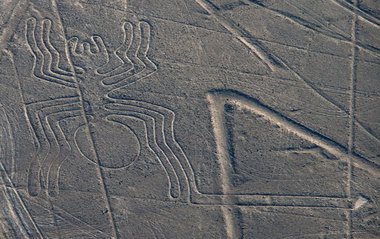
 Advertising in this column
Advertising in this column Two Rooms presents a program of residencies and projects
Two Rooms presents a program of residencies and projects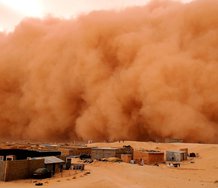
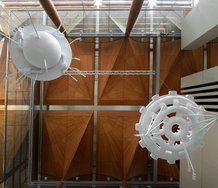
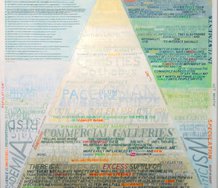
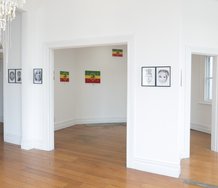
This Discussion has 0 comments.
Comment
Participate
Register to Participate.
Sign in
Sign in to an existing account.